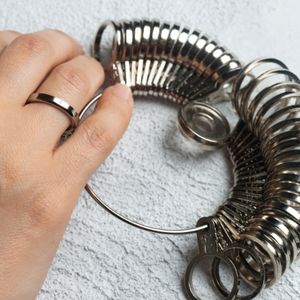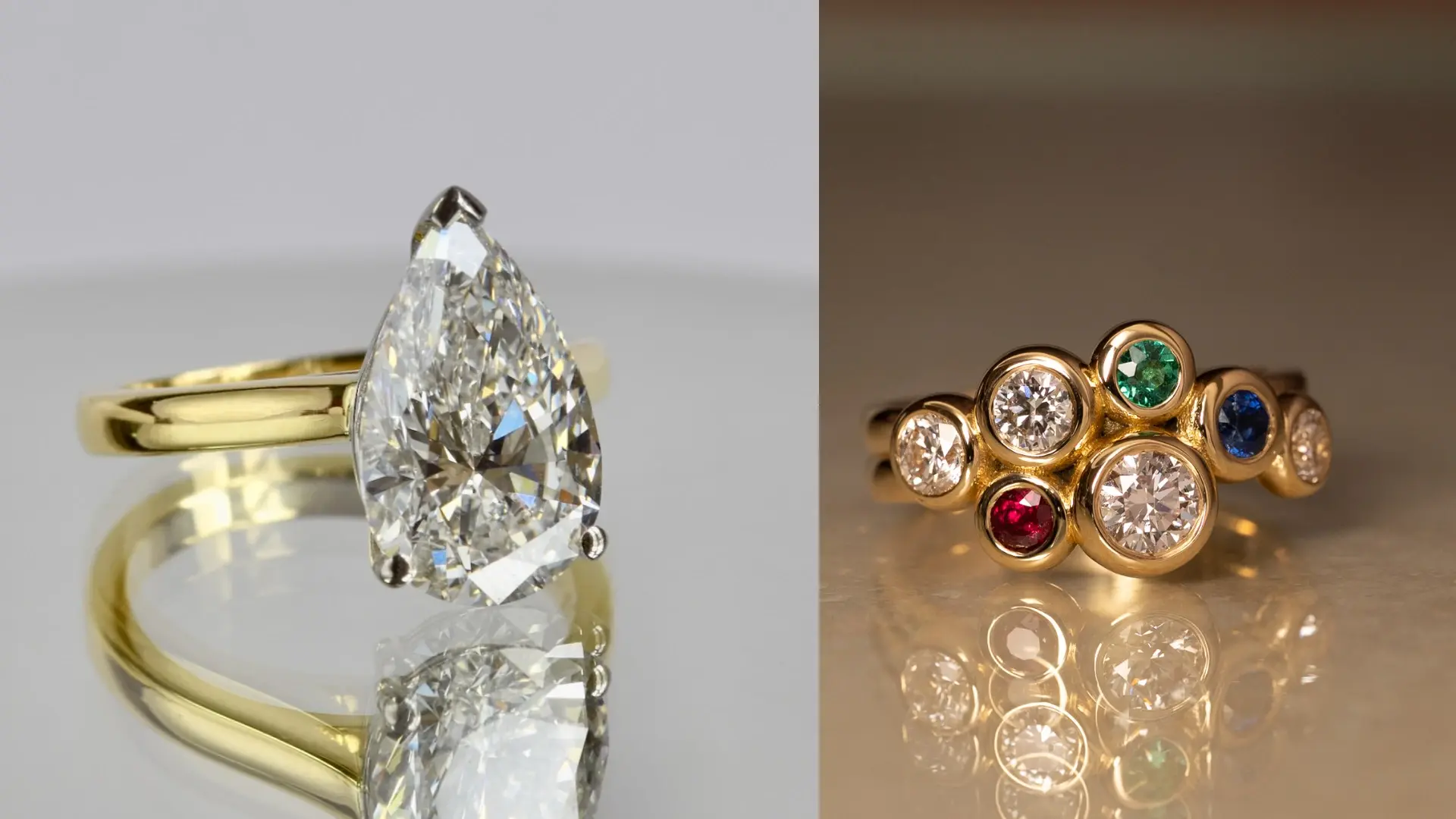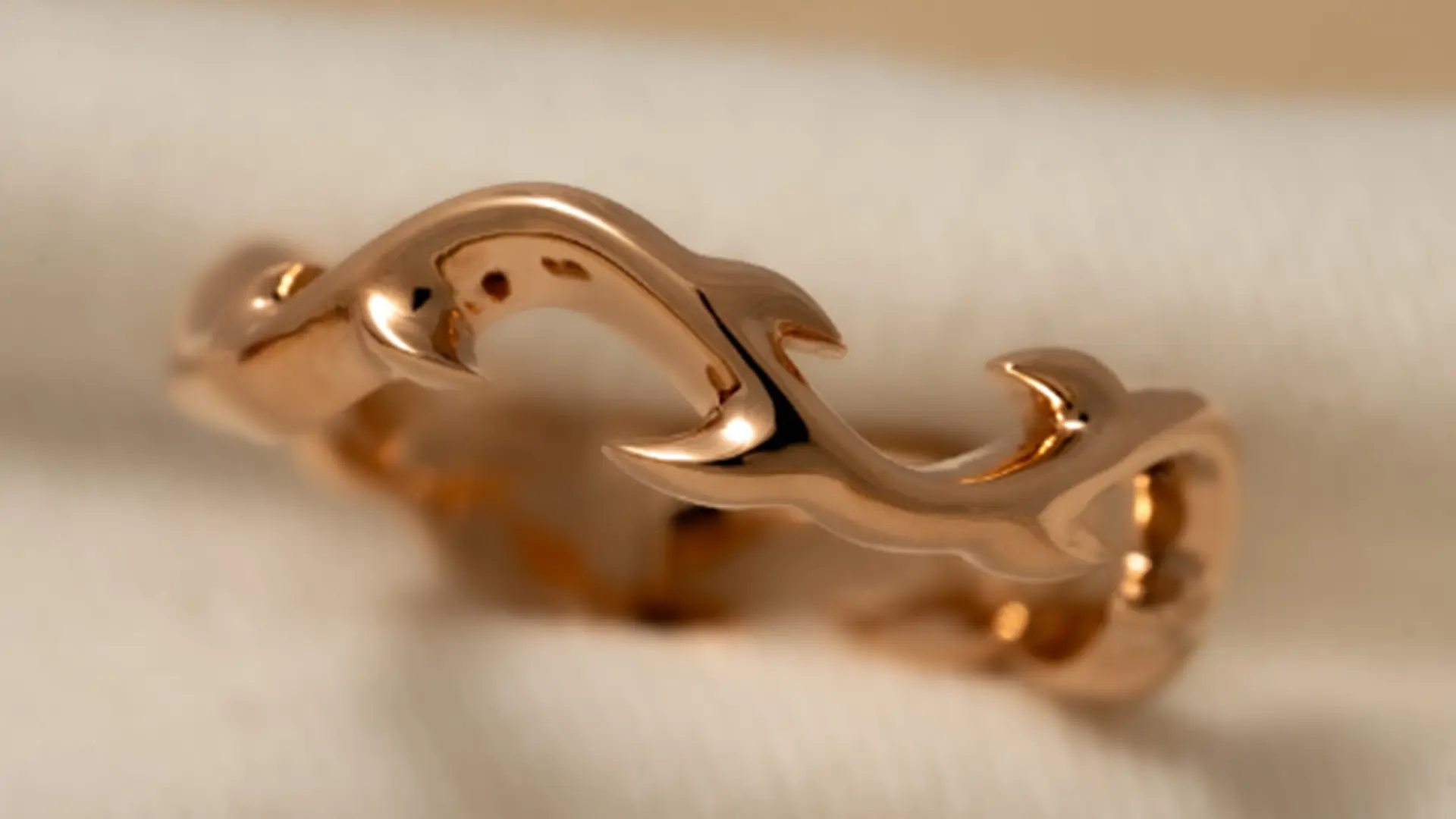Are you in the know? 'Fine' vs 'high' jewellery - the difference most don't know.
Fine Jewellery vs High Jewellery: Understanding the Distinction Two terms often create confusion among jewellery enthusiasts: 'fine' and 'high'...
4 min read
Patrick Wyatt : Feb 10, 2023 2:15:00 PM

How do I find my partner’s finger size?
You have various options…
Firstly, The sneaky method. Steal a ring that they already wear that you know fits them. Take it to a jeweller to measure and then return it before they notice. Make sure the ring you pinch is worn on the same finger as the ring you intend the new one to be worn on. From the little finger to the thumb, our digits can vary by a dozen sizes. Remember, an engagement ring is worn on the left hand (usually a ring will not be worn on this finger before an engagement ring comes along) and the size of the fingers on the left and right hand may not be the same. Most people are right-handed – when this is the case the right-hand fingers tend to be larger. For a left-handed person vice versa.
Secondly, the DIY method. The best way is to measure the diameter of the ring with a ruler. Measure precisely from one inside edge to the other making sure the ruler passes through the very centre of the ring.

Thirdly – The Jedi method. A surprisingly effective way of measuring finger size, one which is often used by wiley old jewellers. By sliding the ring onto one’s own finger, ideally, one that is too large for the ring, it is possible to feel (with closed eyes is often better) where the ring comes onto the cone of the finger as it approaches the knuckle. It is then possible by process of elimination to try on sample sizing rings at your jeweller to find the best match. This method has the advantage of being very fast and very sneaky indeed!

Can you re-size an engagement ring?
An engagement ring is often the first major piece of jewellery that someone will give or receive. If you are thinking of buying an engagement ring, you can check out our handy guide to help. The giver is understandably keen to get the finger size right for the big moment. It is better to err towards a larger size so that it will at least go on in the moment. It is also one of the most straightforward forms of ring to resize. Often an engagement ring will consist of a single gem or set of gems on a plain metal band and it is the band that will be re-sized.
How are fingers measured?
There are various systems for measuring finger size. The US numbered system is the most common internationally. In the UK we use letters of the alphabet with half sizes. There are 2 or 3 systems used in Europe which are all similar but slightly different. On top of this, brands sometimes employ their own. Here is a handy open-source calculator for converting from one to another and relating each to mm measurements.
Can I measure a finger size with string?
Forget it! The difference between the circumferences of sizes is very small. For instance, the circumference of size L is 50.3mm and size M is 51.5mm, a little more than 1mm difference. The string not being rigid, along with the fiddliness of tying a knot or marking the string accurately, and the string stretching as you measure it, make this method very inaccurate.
How tight should a ring be?
As tight as possible but no tighter. This may sound obvious but it helps as a rule of thumb. Going on, the ring should slide over the knuckle with some resistance. Once on it should grip the finger with a little friction, enough so that it doesn’t spin but it should not be wedged on so that it tugs the skin if rotated. Coming off it should require a bit of pressure, perhaps a twist to get over the knuckle but should not slide off in one easy motion.
What is the average finger size in the UK?
In the jewellery profession, we talk about ‘stock size’. This is the average size in the country and the size that retailers hold most of their stock in. In the UK this is L/M for a woman and S/T for a man. One method for estimating a finger size is to adjust from this theoretical average. So if your (female) partner is particularly slender then a good guess might be J, if they have slightly larger hands, O. Men tend to have a wider range of regularly occurring sizes, anywhere between P on the lower end and W on the upper are common.
How is a ring re-sized?
There are a number of different ways of re-sizing a ring. A wedding ring which is the same shape and thickness all the way around may be stretched on an expanding cone or squeezed smaller in a cone-shaped press. A ring with a plain band at the back may be tapped with a hammer to spread the metal and increase the circumference if the adjustment needs to be small. If it is a large adjustment the band is cut through and a section of metal is added or removed. If skillfully done the join and the change to the metal should be all but invisible to the naked eye. It is worth bearing in mind though that repeated re-sizings will naturally thin the band down, as every time the metal will have to be smoothed and polished, removing a very thin layer.
Can you re-size an eternity ring?
Beware the eternity ring! Unless you have a good indication that the size you are working to is correct; forget the surprise, measure the finger. Eternity rings are often complicated to resize as the circumference is defined by a continuous row of stones. To size up or down more than a fraction will generally mean adding or removing a stone. This is not impossible but is also not without its challenges. Doing so can compromise the stones in the ring on either side of where it is resized or, indeed, all the way around. By squeezing or expanding the ring to reshape it can disturb the stones in their settings.
Once you’ve gathered your partner’s ring size and you’re ready to talk bespoke design, don’t hesitate to get in touch – we love to help!

Fine Jewellery vs High Jewellery: Understanding the Distinction Two terms often create confusion among jewellery enthusiasts: 'fine' and 'high'...

“I don’t know what I want, but I know I don’t want boring.” It’s always a good day at Wyatt Jewellery when a client comes along with just a spark of...